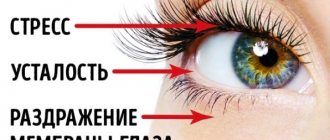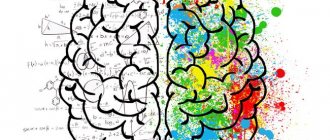Do you feel cramps in your legs? Do you wake up at night with sharp muscle pain? Let's look together at the main causes of seizures and answer frequently asked questions.
What are leg cramps?
A cramp is a sudden contraction of a muscle that does not relax for a variable period of time. Spasm, like pain, can be felt for both a long and short period of time. Muscle spasms arise from a large mass of accumulated decay products released when a vessel is compressed.
Causes of cramps at night
Our phlebologists note several sources that contribute to the occurrence of seizures:
The first source: disruption of normal blood flow in the lower extremities. This is explained by the fact that when blood stagnates in the vessels, the pressure in the veins begins to increase, fluid is released from the vein and spreads to the surrounding tissues. With the fluid, trace elements necessary for natural muscle contraction, such as sodium, calcium and potassium, are released from the blood. The reaction of this is a spontaneous and strong contraction with pain - this is how convulsions occur.
The second reason: the patient suffers from varicose veins. At night, blood flow in the veins slows down, and the body returns to its calm state. And with varicose veins, the process of slowing blood circulation slows down by half. In this regard, the muscles undergo impulse contractions, trying to help the heart push blood through the veins.
The third reason: the ATP mechanism fails. So that at the moment of contraction the muscle can assume a calm state, it is supposed to relax. The body has an element responsible for this action - ATP molecules. If the blood stagnates, the production of ATP is significantly reduced. This means that the ATP mechanism fails.
How to eliminate pain and numbness?
If you suddenly have severe cramps in your legs, what should you do ? The first thing you need to do is pull your toes towards you or press your foot firmly to the floor. Often muscle spasms appear during a night's sleep and the person wakes up. Sit carefully, press your hands to the disturbing area and massage vigorously until this unpleasant sensation goes away. Then raise your legs higher to reduce blood pressure. If you suddenly have severe cramps in your legs, what should you do in a crowded place? Close the muscle tightly with your fingers and hold until the pain goes away.
Leg cramps during pregnancy
Pregnancy is a happy and challenging time. When hormonal changes occur, weight gain and decreased activity. A woman develops varicose veins.
Muscle spasms should be given special attention because they are an anxiety disorder. Cramps indicate a lack of microelements, excess fluid loss (for example, a period of toxicosis). The increasing size of the uterus can put pressure on the inferior vein. At the first manifestations of cramps, you should immediately go to the doctor so that a specialist can identify and help eliminate the cause of night cramps as soon as possible.
Treatment
Depending on the diagnosis and further treatment, the attending physician prescribes medications. Some make up for the lack of vitamins and microelements - they influence the cause of the disease, others relieve spasms and improve well-being - symptomatic therapy is carried out. They are used together, complementing each other.
The most popular medications for treating calf muscle cramps are:
- Tablets containing microelements - Asparkam, Panangin, Magnerot, Magnelis B6.
- Vitamins - popular are Complivit, Alphabet, Calcium D3
- Ointments - Venuron, Venarum, Heparin ointment, Diclofenac. They affect the veins, improve blood circulation in the legs and relieve pain.
In addition to medications, physiotherapeutic methods are used, such as electrophoresis, magnetic therapy, laser therapy, ion therapy and others.
How to stop night cramps
When a patient wakes up from severe pain, the first thing he does is try to rub the sore spot. Unfortunately, this method does not always work. Phlebologists recommend doing the following:
1. While lying down and feeling pain in the calf muscle, pull your foot towards you and stretch the muscle. After you have managed to relieve the cramps, work out both lower limbs, alternately pulling them towards you. This way you will resume blood circulation in the vessels.
2. The easiest way is to use a pin or needle. Inject yourself where the muscle is compressed. If you don’t have anything prickly on hand, you can simply pinch your leg in the shin.
3. Try to stand on the bare, cool floor and walk around. When you feel your muscles relax, stand on the floor for a couple more minutes, shifting from foot to foot. This simple exercise quickly awakens the blood and improves blood circulation.
Cramps in the calf muscles (cramps) causes
Crumpy can occur as a symptom of circulatory disorders in stenotic diseases of the blood vessels of the legs (can be one of the symptoms of intermittent claudication). Patients with diabetes mellitus and hypothyroidism are at risk for developing diseases of the blood vessels of the legs, since with these diseases a disorder of cholesterol metabolism will always develop and atherosclerotic plaques will form on the vessels of the legs as well. This also includes “heavy smokers.”
Cramps can occur after active physical activity on the legs, when squatting, and in the muscles of the hands, repeated spasms can occur during prolonged work with the mouse.
There are also spontaneous cramps in the muscles of the arms and legs. They may be due to hereditary characteristics and do not require special treatment.
But cramps that occur spontaneously and often in adolescence should be taken a close look at, since they may be the first sign of a hereditary enzyme defect in McArld's disease (Glycogenosis type V, myophosphorylase deficiency).
And in adults, spontaneous cramps can be the first symptom of a serious neurological disease - amyotrophic lateral sclerosis .
Prevention of night cramps
To limit yourself from experiencing night cramps, our phlebologists recommend:
- add vitamins such as calcium and magnesium to your menu;
- consume dairy products;
- eliminate smoking;
- choose the right shoes - provide low heels;
- avoid excessive stress on the lower limbs;
- Consume caffeine and strong tea in small quantities.
Contrast baths before bedtime have a positive effect as a preventive measure against cramps, helping to naturally strengthen the walls of the veins.
Diagnosis, treatment and prevention of seizures
You should eat enough foods containing magnesium.
If you have regular seizures that have been bothering you for a long time, do not put off visiting a doctor. First, you should visit a therapist (if seizures occur in a child, then a pediatrician), who will conduct an examination, prescribe the necessary examination and, if necessary, recommend consultations with specialists of a narrow profile - a neurologist, endocrinologist, cardiologist, nephrologist and others.
If the cause of seizures is any somatic pathology, then with adequate treatment, the problem of sudden muscle contractions will soon be resolved.
If the results of the examination show that there are no serious diseases that could provoke seizures, the doctor will give the patient recommendations, if followed, his condition will improve in the near future.
- Proper nutrition.
- It is necessary to divide the daily diet into 5-6 meals, and the portions should not be voluminous.
- The basis of the diet should be complex carbohydrates - cereals, durum wheat pasta, vegetables and fruits.
- Fats also take part in the mechanism of proper muscle contraction - a small piece of butter or fatty red fish will enrich the body with this essential nutrient.
- Don’t forget about foods rich in magnesium (nuts, legumes, carrots, greens, seaweed), potassium (bananas, dried apricots, melon, potatoes), calcium (milk and dairy products), B vitamins (dairy products, walnuts , red fish).
- A healthy lifestyle (adequate physical activity, avoiding heavy loads on the legs, quitting smoking).
- Sleep in a comfortable bed in a position with your legs slightly elevated above the axis of your torso and head.
- Taking relaxing foot baths with sea salt - dissolve 3 tablespoons of sea salt in 5 liters of water at room temperature.
- Massage your feet with warming ointment or cream before bed.
- Refusal of uncomfortable shoes, high heels (shoes should be comfortable for your feet, the height of a stable heel should not exceed 4-5 cm).
- If you have chronic venous insufficiency, wear compression stockings and tights (the degree of compression of these things can be different - to choose the right one, consult a phlebologist).
- Treatment of flat feet, including wearing orthopedic shoes and/or special insoles.
- Taking medications containing multivitamin and mineral complexes (calcium-D3-Nycomed, Magne-B6, asparkam).
Febrile seizures
This is a fairly common occurrence when it comes to children under 6 years of age. It is believed that every tenth child responds to a rise in temperature at least once in his life with a generalized convulsive seizure.
Typically the temperature is required to rise above 38.5 degrees. Then, in the still imperfect child’s brain, foci of pathological excitation arise, triggering many false signals to the muscles.
It looks scary, but in reality everything is not so dangerous: usually the seizure goes away within 2-3 minutes, but it can last 15, after which it ends as suddenly as it began.
And what is important - without causing any harm to the baby. Only seizures lasting more than half an hour require hospitalization and observation. You should also call a doctor if a child over 6 years of age, a teenager, or an adult develops seizures in response to a fever.
What to do? The only way you can and should help a child is to be close to him and make sure he doesn’t get hurt. Just in case, be prepared to turn your head to the side if vomiting begins. Forget about sticking spoons in your mouth.
In attempts to unclench your teeth and pull your tongue out of your mouth, you will only injure yourself and the child. Epilepsy subsequently develops in only 3% of children who have had febrile seizures, but it is still worth doing an electroencephalogram after recovery.
Diagnostics
Finding out on your own why your legs are cramping does not lead to a positive result. To establish a diagnosis, you should see a doctor. During your appointment, your specialist will find out the following:
- When my legs started to cramp at night.
- What preceded these symptoms?
- Presence of concomitant pathologies.
- Does the patient engage in sports, including physical training?
- Spasms are acute or mild.
- How often he cramps and twists his legs at night.
Causes
If your legs cramp, the cause is associated with hyperactivity of the brain, disruption of the conduction of nerve fibers of the muscles, or a decrease in the content of ATP in the blood. The development of these processes is facilitated by:
- Excessive physical activity.
- Suffered traumatic brain injury.
- Impact of stress factors.
- Using uncomfortable shoes.
- Flat feet.
- Chronic intoxication of the body with medications and chemicals.
- Recently undergone anesthesia (during it, medications are used - muscle relaxants, the effect of which may have complications in the form of involuntary contractions).
- Exhaustive diet.
- Dehydration of the body.
Other causes of muscle spasms are blood loss, hypovitaminosis, a sharp transition from high to low temperature, or vice versa.
Why do my legs cramp at night?
The appearance of leg muscle spasms occurs in healthy people, as well as in people susceptible to chronic pathologies. In a healthy person, the lower limbs are pulled in the following cases:
- A particular muscle group is in a tense state for a long time.
- The limbs occupy a certain position for a long time.
- When the body freezes.
- If there is a heavy load on the untrained body.
- With a lack of vitamins and microelements in the body.
For a healthy person, seizures are a rare occurrence. They are characterized by rapid disappearance after sleep. Subsequently they are rarely observed. In cases where convulsions are characterized by regularity and last up to 5 minutes, the causes should be sought in the malfunction of internal organs and systems.
There are 3 dangerous reasons why legs cramp:
- Violation of water and electrolyte balance.
- Poor circulation of soft tissues.
- Pathologies of the nervous system.
First aid for relieving an attack
In the first seconds, panic may set in, especially if convulsions have not occurred before. It needs to be controlled. Spasms are not life-threatening and can be eliminated quite simply.
- It is important to relax contracted muscles. To do this, you need to move your legs: lower them from the bed to the floor, rotate your feet.
- To relieve severe pain and restore blood flow, it is recommended to rub and massage your legs with your palms.
- If the attack is very sharp, you can prick the affected area with a pin or pinch with your nails. This will cause a reflexive release of the spasmed muscles. The method helps relieve cramps when in water, when every second is important.
- If the spasm affects the feet, you need to walk on the floor with bare feet. Coolness will help restore nerve impulses. It is recommended to do several exercises: standing, roll from toes to heels and back, take a few steps on the inside, then on the outside of the soles, tuck and straighten your toes.
At home, to relieve pain, it is useful to take a contrast shower, pouring alternately warm and cool water on your feet. After the cramps have subsided, it is useful to lie on your back for a while, using support for your legs above the level of your head.
Prevention
To avoid painful symptoms, you should:
- Strictly control water balance. During hot weather outside, significantly increase the volume of fluid consumed.
- Choose the right shoes with sufficient ankle support.
- Every day, massage your limbs yourself, starting from your fingers and ending with your knee. Massage is also done when the legs do not cramp.
- Avoid overloading your limbs.
- Regularly take vitamins and medications containing potassium, calcium, and magnesium.
| 01.11.2019
Leg cramps are a problem that is familiar to quite a lot of people. Most often they occur at night, when you are sleeping peacefully, and then wake up from a sharp dagger pain. Of course, after a few minutes, after you rub your leg, the pain will go away, but it will continue to make itself felt for some time. It is unlikely that such sensations can be called pleasant. Let's try to figure out what causes leg cramps. Common Causes of Leg Cramps A cramp is an involuntary muscle contraction accompanied by severe pain. Most often, cramps are observed in the calves, although sometimes cramps occur in the feet and toes. Seizures can occur at different ages, but more often people of the middle and older generations are susceptible to them. We will look at the most common reasons why leg cramps may occur. Micronutrient deficiency The most common cause. This primarily concerns a lack of potassium, calcium and magnesium. Micronutrient deficiencies can occur due to certain medications that slow the absorption of magnesium. These medications include, for example, antacids used to treat heartburn. Also, a deficiency of these substances occurs during pregnancy, since the woman’s body consumes them in much larger quantities than usual. Diets high in protein make calcium absorption difficult. In addition, stress and increased sweating can cause micronutrient deficiency. The last reason is especially relevant in the summer, and therefore cramps in the leg muscles occur much more often in the warm season. In addition, cramps can be caused by a lack of vitamin D. Physical activity and sports Cramps appear due to constant muscle tension and insufficient relaxation. Typically, physical activity causes cramps in the calves, since it is the calf muscles that bear the maximum load. Other causes include: varicose veins; hypothermia; presence of old injuries; radiculitis; flat feet. Causes of cramps in the toes Such cramps are observed less frequently than cramps in the calf muscles. In women, the cause of cramps in the feet and toes is often the long-term wearing of narrow, uncomfortable shoes, high-heeled shoes without habit. In addition, hypothermia can cause convulsions. But if leg cramps are not isolated, but are observed frequently, then you need to visit a doctor, since most likely the cause is venous insufficiency, a lack of certain electrolytes, or another disease. What to do if you have leg cramps? Since the sensations of cramps are very painful, measures must be taken immediately. This is especially important if a cramp cramps your leg while in a body of water: An injection with a sharp object helps to quickly relieve cramps. To do this, some people who know that they are prone to cramps fasten a safety pin to their swimming trunks when swimming. If a cramp appears, stand up, take off your socks and shoes, despite the pain, take a walk. Preferably on a hard, cold surface, not on a carpet. Rub the sore limb. Do not be careful, press on the cramps in the calves of the legs, possibly hard, to push through the cramped muscle. You can use mustard oil for massage. In the summer, to avoid cramps, drink mineral water with a lot of salts or add a little salt to your drinking water. If the cramp has passed, but the muscle continues to hurt, it is recommended to wrap the leg with an elastic bandage. And remember: if cramps recur regularly, then you need to take a course of vitamins and microelements, including calcium, magnesium, vitamin D, but before that, visit a doctor and take general and biochemical blood tests.
Our pride! Our valiant defenders of the Motherland!
TOP 10 USEFUL TIPS FOR A HEALTHY HEART








